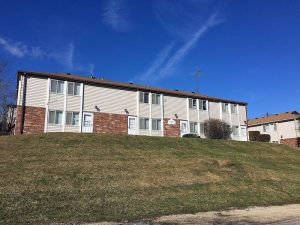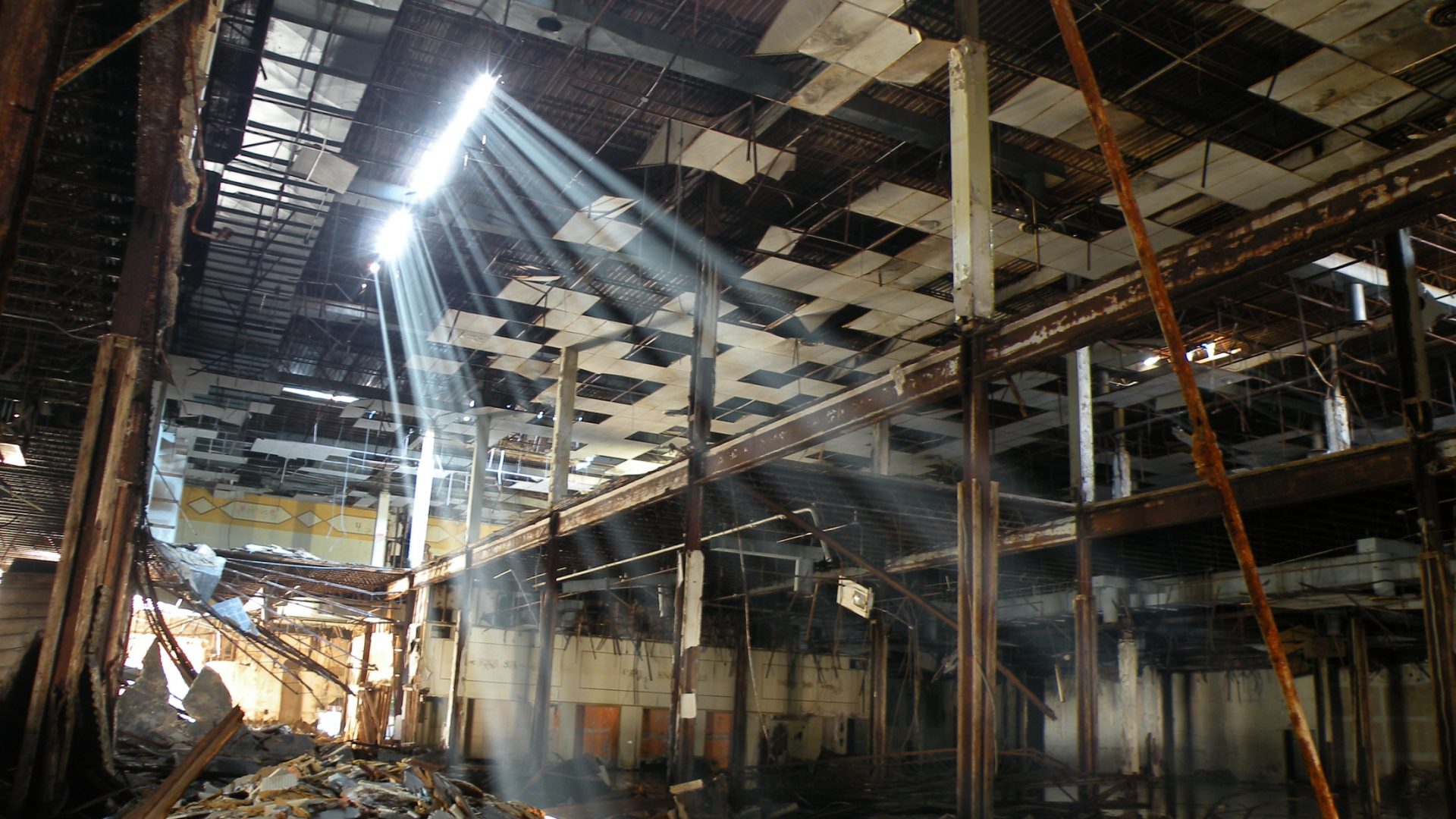| Nicknames | Hellgin | |
|---|---|---|
| Settled by | Provide info | |
| Year infiltrated | Provide info | |
| Crime impact | Part | |
| Worst areas | Generally the entire area of: Interstate 90 to Forest Drive on the north, Kane Street on the south, Liberty Street on the east, Mclean Boulevard on the west |
|
| Suburban projects | None |
Here is another Chicago land suburb that has built up quite a reputation as a bad neighborhood, but that of course depends on who you talk to. Some people in the Chicago metropolitan area will say that Elgin is an awful place to live and is dangerous, and then others will say it is a great middle class town with beautiful homes both old and new. The truth is both parties speak some truth, just like Chicago and many other Chicago land suburbs there are your parts of town that have very low crime and are a higher income class, then there are parts that have higher crime and heavier gang activity. Elgin also can boast of an elaborate downtown area that offers shopping and a jumping nightlife, while you can also head to the Grand Victoria Casino and gamble the night away while drinking yourself silly. Elgin has it all, grand 19th century Victorian style palaces, a swanky downtown, rows upon rows of new houses packed in upper middle class subdivisions, gambling and nightlife, scores of shopping centers, street gangs, poverty and murder.
In 1835, James T. Gifford and Hezekiah Gifford had heard rumor that a certain part of Illinois had ideal land for farming. The two men packed their bags immediately and headed from New York out to this Promised Land, and when the men arrived they built up a farming town that they would name Elgin, which was a name taken after an old Scottish tune.
During the Civil War years Elgin became a community that was big on Civil War supplies manufacturing which helped build up the local economy, then in the year 1864 Elgin National Watch Company opened its doors and employed thousands which caused Elgin’s population to boom. In the midst of Elgin’s growth many elegant Victorian style houses were built that the community has taken pride in for many generations afterward.
Gangs have been thriving in Elgin for many years and this dates back to the greaser days as far back as at least 1954. I don’t know too many details about the oldest Elgin gangs besides what I have from one article but the Elgin greasers tangled as far up as Chicago proving they made enough noise in the Chicago area to get noticed by gangs that far away. I presume that greaser clubs were in Elgin all through the 1950s and 1960s and this is what laid the groundwork for later gangs to follow.
Elgin always had a strong working class community from the 19th century until about the 1970s. When many manufacturing industries closed down and the Elgin National Watch Company closed down in 1966, many jobs that the working class Elginites relied on to provide for their families, were now taken from them so they packed their bags and moved out of the older central section of town. As many working class individuals were leaving the older part of town the area bounded by Summit Street on the north, Chicago Street on the south, Liberty Street on the east and the Fox River on the west began to deteriorate by the late 1960s and property values soon fell, this area then became ideal for lower income residents moving in from Chicago.
As lower income class residents moved in back in the 1970s the crime rate started to increase in Elgin and also the using and selling of Heroin increased as the decade progressed. Drug dealers loved to do most of their business near the downtown area because of the heavy traffic of outsiders coming and going.
In the early 1980s, Elgin began to experience Latino migration into the older central sections of the community. Affordable housing was appealing to Latino families earning lower incomes. The families were migrating from Chicago and looked to the suburb for a better life for their children; however, some of the children from the city were a part of Chicago street gangs. Chicago based gangs would arrive in the year 1980 as Latin Kings and Maniac Latin Disciples now called these streets home. Elgin had an issue with Chicago based street gangs by 1982. By the year 1983 the issues with street gangs became serious enough for the city to warrant gang outreach programs at the Elgin recreational center.
By the mid-1980s, Chicago based street gangs had become a large presence in the suburb and now several violent acts were being committed that included murder. In the year 1984 Elgin police created their first anti-gang unit because there were now 8 different gangs already operating in the suburb mainly focused in the central Elgin area (Chicago Tribune Melita Garza November 14, 1991). The gang squad was especially busy by 1985 after a major spike in violent crime was happening in the suburb that was mainly blamed on street gangs. The drug trafficking was also on the rise higher than ever in the suburb. Elgin police made a major drug bust in the suburb in February of 1986 when 6 pounds of heroin worth $1 million dollars was seized by local police, the suspect that drove the car was heavily connected to the Herrera family drug cartel that connected Mexico to Chicago for heroin trafficking (Chicago Tribune February 22, 1986). The Herrera family had been known to be heavily connected to the Maniac Latin Disciples and Latin Kings over the course of many years so their influence in Elgin just showed that street gang were already in control of a part of this suburb by 1986.
In the late 1980s, gang activity greatly spiked in the suburb as gangs were shooting each other over drug profits. The central part of Elgin became a dangerous place and many people visiting downtown began to fear this area by the river.

In the year 1987, the apartments on Watch Court were the biggest hot spot for buying drugs in the suburb and gang members were pushing the drugs heavily in the complex, Elgin police started cracking down on the Watch Court drug activity and made several arrests in the fall of 1987, this successfully broke up the operation (Chicago Tribune Joseph Sjostrom, October 22, 1988).
In the year 1988 Elgin experienced 8 homicides, most of those were gang related and the cocaine trade was explosive in the suburb. Police began watching the intersection of Anne Street and Gifford Street because there was a heavy amount of cocaine trafficking going on at that intersection, after the Watch Court drug ring was broken up in 1987 police discovered it was now operating at Anne and Gifford and the surrounding area. Drug dealers sat in chairs in a vacant lot and sold drugs to customers as they drove up or walked up. In the summer of 1988 the drug trade in and around this intersection became so hot that it became the heaviest concentration of drug activity in the entire suburb. In October of 1988 police finally took down 12 people involved and closed that operation (Chicago Tribune Joseph Sjostrom, October 22, 1988). Police were also dealing with gang activity in 1988 and made over 50 arrests of gang members (Chicago Tribune Melita Garza November 14, 1991).
In the year 1990, authorities discovered much of the gang leadership of the Latino gangs was Mexican immigrants; therefore, deportations were issued to many top gang leaders, in total 86 deportations happened that year and most of them were gang members, all 86 were criminals. There were also 68 gang related juvenile arrests made in 1990 with 110 juvenile court cases. There were also a reported 27 gang related shootings in the year 1990. Despite the take down of many hard core gang leaders thanks to deportation the heavy gang activity still continued. The take down of the top leadership of Latino gangs gave rise to African American gangs like the Gangster Disciples and Conservative Vice Lords (Chicago Tribune Melita Garza November 14, 1991). There were now 6 active gangs operating in the suburb in 1990.
In the early to mid-1970s, Laotian immigration came to the suburb of as these immigrants were fleeing the Vietnam War devastation. Laotian youths soon found themselves dealing with street gangs as they grew up in the suburb; they especially clashed with People Nation gangs such as Latin Kings and Vice Lords. Instead of joining the various gangs the suburb had to offer, the youths were offered membership from a west coast gang called the Laos Posse in March of 1991 that aligned themselves with the Folk Nation alliance in Elgin. The Laos Posse soon showed they were no joke and became drug dealers and even became killers, this group of Asian kids had to prove themselves against Latino and black gangs, and soon their reputation grew in the early and mid-1990s.
The early 1990s brought in many new street gangs and gang members. In 1991 there were 400 known gang members on the streets of Elgin in 6 different gangs. By 1993, there were about 500 known members in 15 different street gangs. Between the years 1991 to 1993 several new Chicago based street gangs were introduced to the streets of Elgin. These numbers of course do not account for the hundreds of undocumented gang members which would probably have doubled that number.
Gang violence and the growth of membership continued in Elgin in the mid-1990s, police and the community did begin to fight back in the late 1990s and going forward, but the central section of the suburb still continued to have elevated gang activity that still presently occurs.
Over the course of Elgin’s history here is a list of gangs that have operated in the suburb at one time or another: Laos Posse, Maniac Latin Disciples, Latin Kings, Gangster Disciples, Spanish Gangster Disciples, Insane Deuces, Conservative Vice Lords, Orquestra Albany, Spanish Cobras, Four Corner Hustlers, Ambrose, Imperial Insane Vice Lords, City Knights, Insane Unknowns, Milwaukee Kings, Black Disciples and La Raza.




